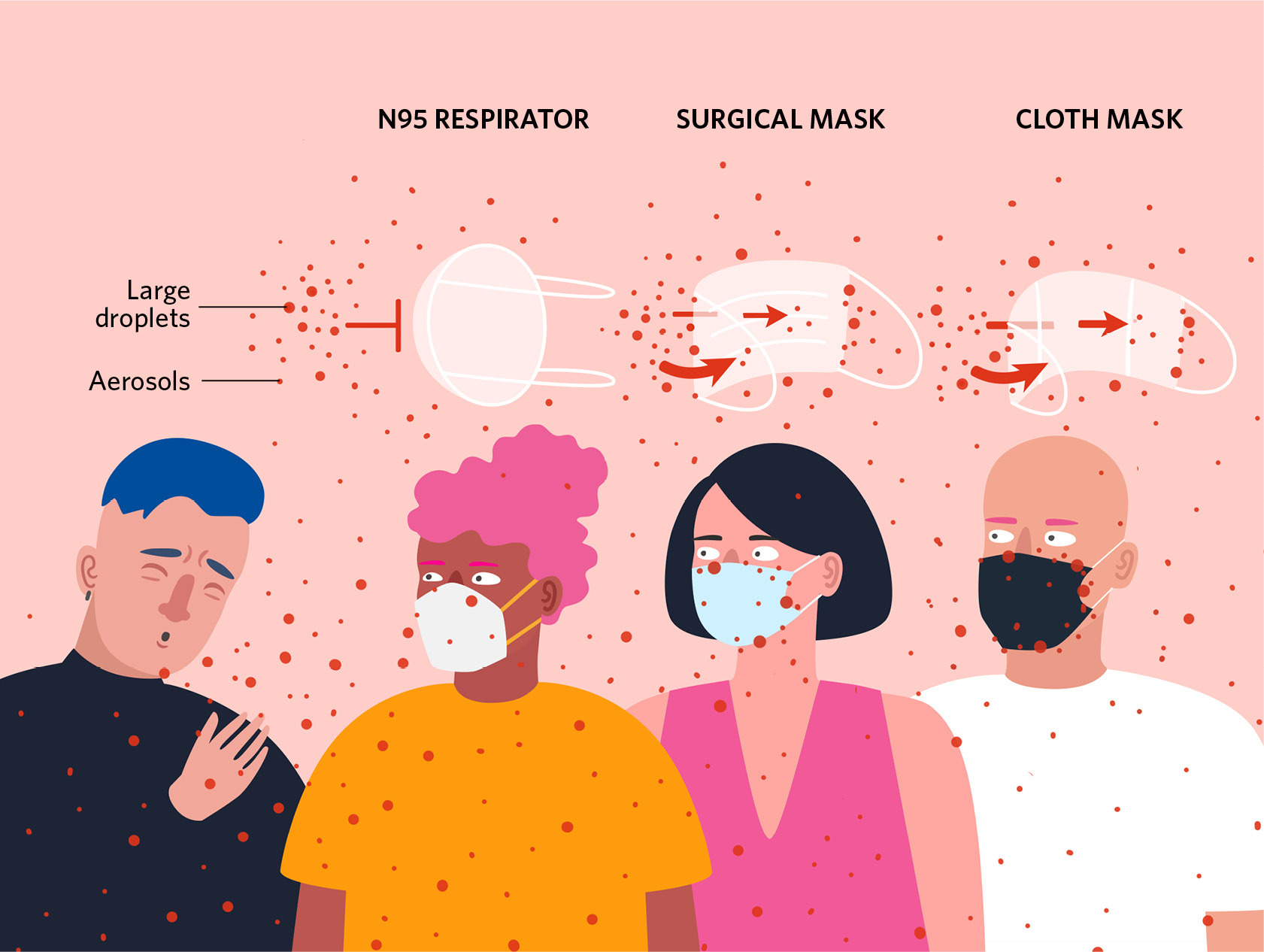While many questions remain about how well masks stop an infected individual from sharing her germs, here’s what the research shows about how various face coverings can protect their wearers.

N95 respirator: Tight-fitting single-use masks typically made with synthetic materials such as polyester and polypropylene. These masks are able to filter out at least 95 percent of both large airborne droplets and aerosols.
Surgical/medical masks: Loose-fitting single-use masks made with three or more layers of synthetic materials. These can filter out large airborne particles, but some aerosols can leak through, and particle-containing air is able to flow around the edges.
Fabric masks: These often-homemade masks vary widely in their construction and effectiveness. Aerosols are likely to leak through, and particle-containing air is able to flow around the edges. With appropriate washing or a couple of days to decontaminate, fabric masks are reusable.

Read the full story.
Clarification (October 21, 2020): This story has been updated to clarify that it focuses on how masks protect their wearers. The Scientist regrets any confusion.
Interested in reading more?







